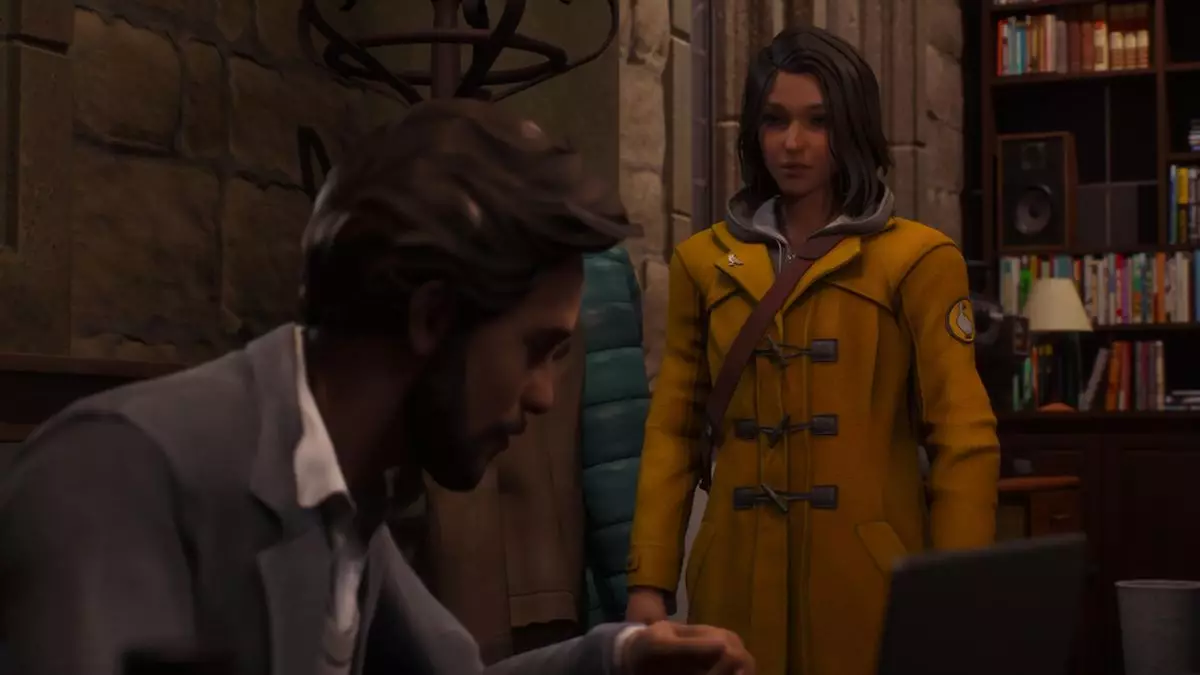In the narrative-driven world of *Life is Strange: Double Exposure*, players are thrust into challenging scenarios filled with mystery and moral dilemmas. One particularly intricate moment occurs when characters delve into the depths of Lucas’ office—an essential location that holds crucial evidence surrounding the enigmatic death of Maya Okada, a former student. Engaging with this segment of the game requires a keen eye, an understanding of character dynamics, and a willingness to explore the nuances of player choices.
The Weight of Choices on Character Interactions
Upon entering the scenario that leads Max—our protagonist—into Lucas’ office, the player’s previous interactions significantly influence the unfolding events. Players may have established varying degrees of rapport with Lucas, colored by their decision to send a photo related to a restraining order to another character, Safi. This built emotional tension is paramount in shaping Lucas’ demeanor during the conversation. As Max navigates her relationships, her dialogue options can lead to differing revelations, enhancing the game’s replayability while challenging players to confront the consequences of their choices.
Once the conversation with Lucas concludes, Max’s objective is to scavenge for crucial details hidden within the confines of the office. Transitioning into the Dead World timeline adds layers to the gameplay, introducing a sense of urgency and the need for observation. Upon entering Lucas’ desolate workspace, players are overwhelmed with numerous items begging to be examined. The office ambiance, a remnant of Lucas’ past, subtly suggests layers of secrecy waiting to be uncovered.
A vital item to interact with is the lower drawer of a filing cabinet, which contains documents that unveil significant connections among characters: Maya, Vinh, and Safi. As players sift through the papers, they gather context that deepens the relationship dynamics and illuminates Lucas’ role as a tutor. This information not only serves the narrative but also resonates with themes of mentorship and exploitation seen throughout the *Life is Strange* series, inviting players to reflect on the ethical dimensions of Lucas’ actions.
Players often experience frustration when it comes to locating the key within Lucas’ office, especially if inundated by potential glitches. This element serves as both a tutorial for problem-solving and a test of patience, mirroring the investigative nature that the game embodies. Once discovered, players soon realize the key unlocks more than just mundane office storage; it opens up layers of Lucas’ darker secrets.
The pivotal manuscript, which reveals Lucas’ act of plagiarism, stands as a key narrative turning point, setting the stage for ethical debates about artistic integrity and the exploitation of vulnerable students. This moment forces players to reckon with the implications of Lucas’ actions, presenting moral weight to an otherwise straightforward gameplay mechanic. The revelation not only stresses the importance of authenticity but also raises questions about the balance of personal gain against the welfare of others.
After obtaining the manuscript, Max’s journey leads to a confrontation with Safi, which becomes a culmination of the player’s preceding choices. The emotional stakes are heightened as Max faces the ramifications of their earlier gossip about Safi’s failed book deal. The narrative intricacies at this juncture force players to confront the effects of their decisions and the emotional fallout for the characters involved. This multifaceted engagement fosters a deeper connection between the player and the narrative, elevating *Life is Strange: Double Exposure* beyond mere gameplay into a tapestry of human emotion and ethical quandaries.
In essence, Lucas’ office in *Life is Strange: Double Exposure* isn’t merely a location to gather evidence; it symbolizes the morally ambiguous landscape players navigate throughout the game. Every interaction, every choice, and every piece of evidence builds upon a rich narrative that compels players to reflect not just on the game’s story, but their own values and decisions. This pivotal area serves as a microcosm of the game’s overarching themes and showcases the intricate interplay between character development and player agency. As players journey through this richly woven world, they are left to ponder: how far would they go to uncover the truth?

